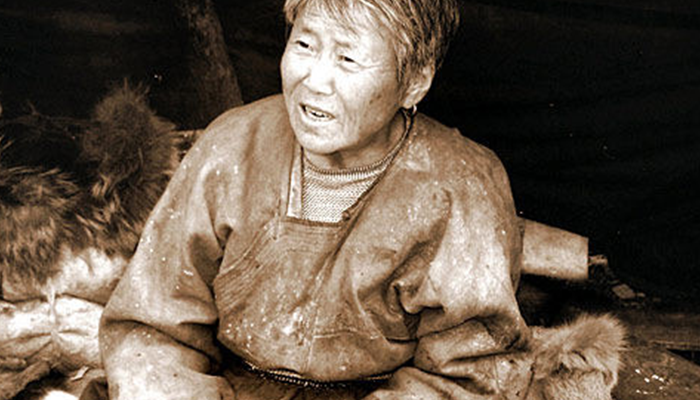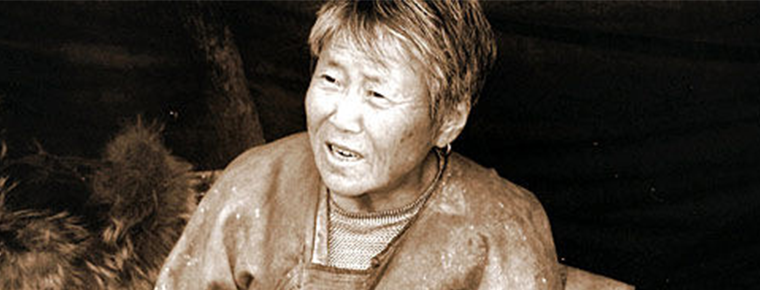Mosukun of Oroqen Nationality
Mosukun of Oroqen Nationality
Mosukun of Oroqen nationality is Oroqen language, meaning "telling and singing stories". Most of the performances are performed by a single person without accompaniment of musical instruments, such as speaking, singing and rap.
On May 20, 2006, "Oroqen Mosukun" declared by Heilongjiang Province was listed in the first batch of national intangible cultural heritage list with the approval of the State Council.
historical origin
Mosukun of Oroqen Nationality was a form of Quyi storytelling which was formed and prevailed in the Oroqen Nationality inhabited areas of Heilongjiang Xiaoxing'an Mountains and Xiaoxing'an Mountains, and was formed in the late Qing Dynasty.
artistic characteristics
form
"Mosukun" is a very rich art of rap, "which contains the meaning of sadly narrating or murmuring about one's own suffering, telling and singing more about the heroic story of'Morgan'and one's own life experience of suffering". "Mosukun" comes from life, and its production is closely related to religion. Shaman is not only a wizard who specializes in religious activities, but also a performing artist who can sing, dance and speak. Most of Shaman himself is the creator, disseminator and successor of literature. "Mosukun" is a combination of rap and singing performance form, the tune is not fixed, by the rapper to play freely.
content
Stories are long and short, long to tell for a few days to more than a dozen days, story characters are distinct. The language is vivid, the plot is tortuous and fascinating. The lyrics of "Hero Gepayao" reach 1900 lines, with more than 100,000 words. It vividly describes the story of Gepayao's struggle against the devil by means of metaphor, exaggeration, parallelism and metonymy. It is a rare grand epic in the treasure house of Chinese literature.
Tune
"Mosukun" tunes are mostly unstable and vary according to the different places of popularity. For example, the multi-purpose tunes circulated in Sunk , in Huma [Kuyale tune], and in Heihe belong to the "type tune". There are also situations where different tunes are used according to different programs, such as when performing "Aldan Butterfly", when performing "The Story of Twin Flying Birds", when performing "The Hunter and His Beloved Wife", which belongs to "stereotyped special tune". There are also cases in which various tunes are freely chosen or borrowed for performance.
Representative works
Existing representative works of "Mosukun" rap style include: Hero Gepayao, Wadukan and Yadukan, Polkanemogen, Buttihamozigan, Legend of the Two Flying Birds, Legend of the Deer, Tales of Yarin Juehan and Errheintergen, Nourland and Aldan Rolling Butterfly. Among them, there are heroic stories, love stories representing loyalty, stories of suffering life, stories of struggle against reluctance to humiliate, and so on. Those tortuous plots, vivid characters, strong appeal, coupled with beautiful tunes and humorous vivid language art, so that the listener more sleep and forget to eat, such as drunk. Mosukun's literary and linguistic art has the characteristics of fluency, rhyme, refinement and simplicity, which are prominent in prose and verse.
Inheritance and protection
Mosukun's artistic inheritance has been handed down by word of mouth. Famous artists include Mohaiting, Li Shuihua, Wei Jinxiang, Chutewen, Mendelin and so on.
The state attaches great importance to the protection of intangible cultural heritage. On May 20, 2006, the opera was approved by the State Council and listed in the first batch of national intangible cultural heritage list.
Inheritance significance
Throughout the 20th century after its formation, Mosukun was an important means of entertainment and education for the Oroqen people, as well as a carrier of their national spirit and ideology. It is of great significance to understand and study the social, historical, economic, cultural and religious traditions of the northern fishing and hunting nationalities, including the Oroqen. However, today's Mosukun has been strongly impacted by modernization, and its survival is in crisis, which needs to be protected urgently.


-
1.Mount Tai
Mount Tai, also known as Daishan, Daizhong, Daiyue, Dongyue, Taiyue, is located in the central part of Shandong Province, belonging to Tai'an City, stretching between Tai'an, Jinan, Zibo, with a total
Time 2018-10-28 -
2.Taiyuan Qingxu Baoyuan Old Vinegar Workshop
Taiyuan Qingxu Baoyuan Old Vinegar Workshop is located in Taiyuan City, Shanxi Province. It is the "Taiyuan Youth Heritage and Education Base". It has been awarded the "First Industrial
Time 2019-02-13 -
3.Binyang Gulong Festival
Binyang Gulong Festival is a unique traditional festival in Binyang County, Guangxi. It is a comprehensive folk festival that integrates Han and Zhuang cultures.
Time 2019-04-04 -
4.Riddle
Riddles mainly refer to hidden words, such as allusions or words, which can be guessed by others. They can also be extended to things containing mysteries. Riddles originated from ancient Chinese folk
Time 2019-06-04 -
5.southern accent
Nanyin, also known as "string" and "Quanzhou Nanyin", is the oldest ancient music in China. During the Han, Jin, Tang and Song dynasties, the immigrants from the Central Plains bro
Time 2019-06-07 -
6.Weaving and Dyeing Techniques of Adlais Silk
Adlais silk is produced in Jiya Township, Luopu County, located in the northwest of Luopu County, on the East Bank of the middle and lower reaches of the Yulong Kashi River. Ancient Hetian was the tra
Time 2019-07-06 -
7.Xingtai plum blossom boxing
Plum Blossom Boxing is also called Plum Blossom Pile and Plum Blossom Boxing. One of the traditional Chinese martial arts. For the convenience of drilling, drilling on the ground is more extensive, kn
Time 2019-07-08 -
8.Traditional Brewing Techniques of Distilled Liquor
Distilled liquor brewing is to first make grains, potatoes and other starch-rich or sugar-rich raw materials into grains (no filtered wine) or fermentation into grains (turbid wine), and then distille
Time 2019-07-25 -
9.Zong Baonao
The dance used for sacrifice - the Yao Zong Baonao Dance is evolved from an ancient legend. According to Changtang Yao people, from generation to generation, in ancient times, a beautiful Yao mother l
Time 2019-08-16 -
10.Cao Zhi
Cao Zhi (192 - 232 December 27th), Zi Jian, Pei Guo Qiao County (now) Anhui province Bozhou City, born in East Wuyang (now Shenxian, Shandong, Juancheng). Cao Cao He was born with third sons from Quee
Time 2019-09-07 -
11.Batang Tuanjie steamed stuffed bun
The Tuanjie steamed bun was not invented by the 18th army when it entered Batang. In the old days, Tuanjie steamed bun, to be exact, was made by Batang ancestors hundreds of years ago. Moreover, it has been handed down to the present day.
Time 2020-12-06 -
12.Hydrology of Neijiang River
Tuojiang River is the main river in the urban area. It flows through Zizhong, Dongxing and Shizhong District. It is the main waterway transportation route in the city. Since ancient times, there has been a busy scene description of "boats of ten thousand trees
Time 2020-12-16